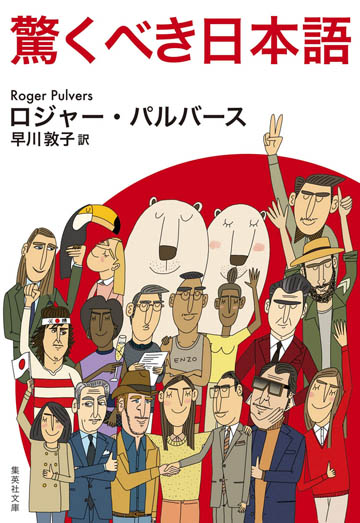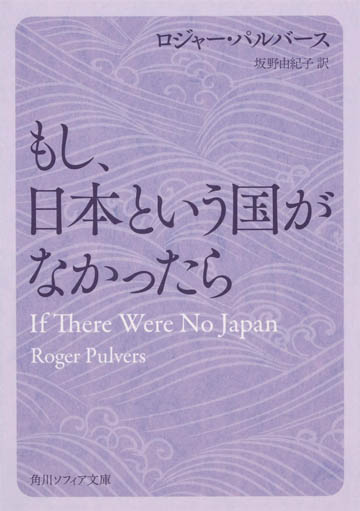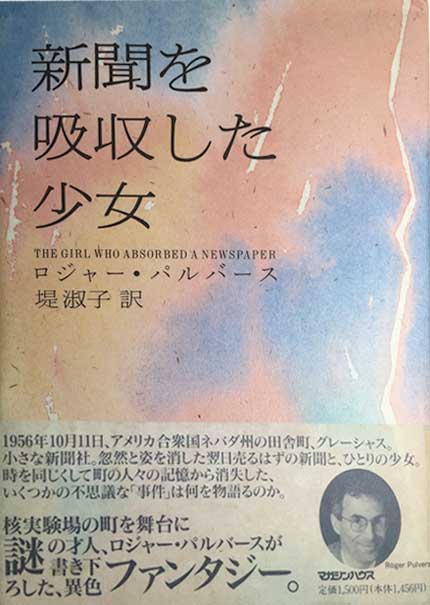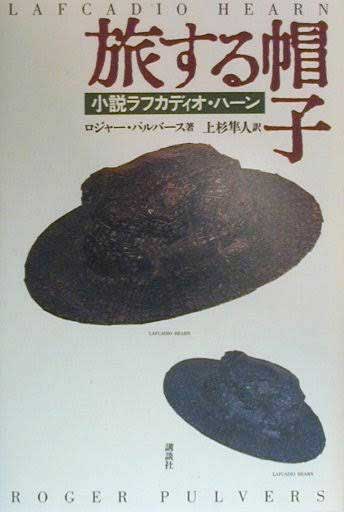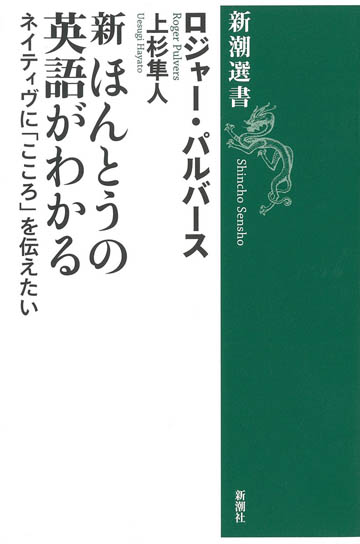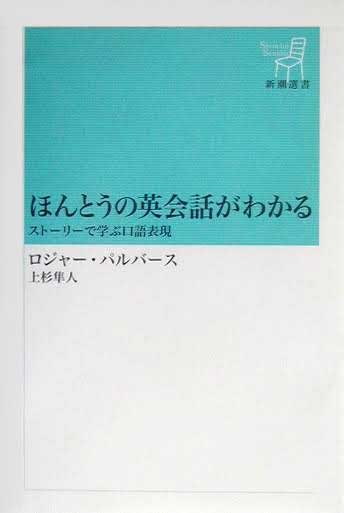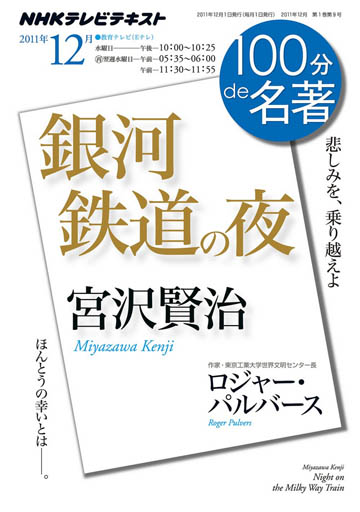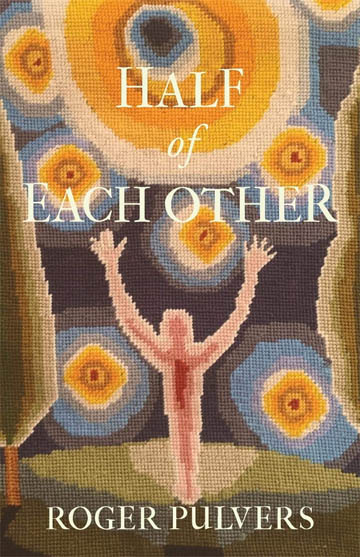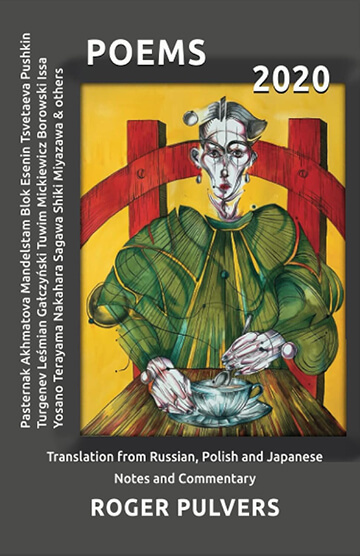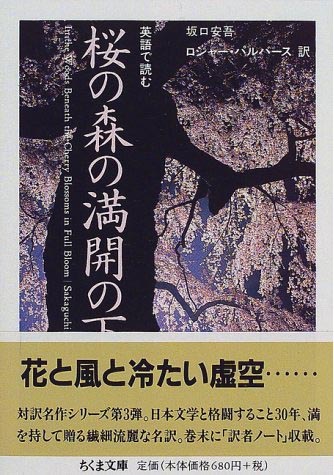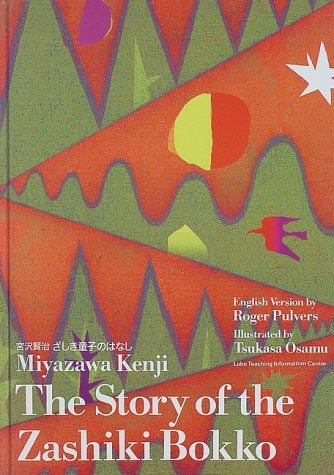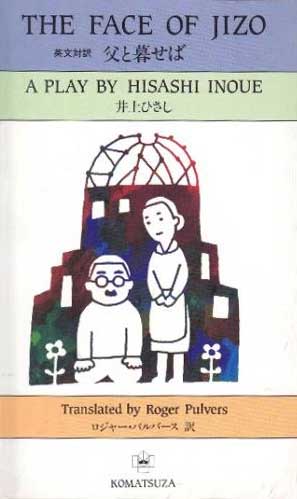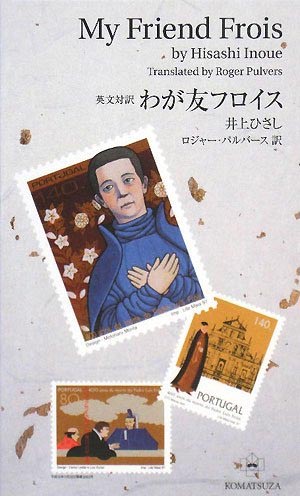
Roger Pulvers
“Writing for me is like method acting. I draw on all my experience to inhabit the characters and situations”.Roger Pulvers is an author, playwright, theatre director, and translator. He has published more than 50 books in Japanese and English, including novels, essays, plays, and poetry. His first book, a collection of short stories, On the Edge of Kyoto, was published in 1969 two years after he first came to Japan. His recent novel, Hoshizuna Monogatari (Star Sand), which he wrote in Japanese, was published by Kodansha, Japan’s largest publisher, in 2015 and subsequently in English in 2016.
Drawing on his screenplay writing experience, he wrote a Japanese screenplay of the book, which was released nationally as a film starring Lisa Oda and Brandon McClelland in Japan, in 2017. Naturally, the film is directed by Pulvers. He was initially drawn to film making after working as the assistant to one of Japan’s best known film directors, Nagisa Oshima, when he directed his 1983 classic Merry Christmas, Mr. Lawrence, which starred David Bowie, Tom Conti, Takeshi Kitano, Ryuichi Sakamoto and Jack Thompson. Pulvers is the recipient of several literary prizes, including the Kenji Miyazawa Prize (2008) and the Noma Award for the Translation of Japanese Literature (2013).
“Roger Pulvers’ life reads like an adventure story. His recollections of life in Japan in the 1960s are bound to become a part of Japan’s national heritage,” Ryuichi Sakamoto, musician and composer.

-
 Original, Short and Compelling Reads
Original, Short and Compelling ReadsTokyo Performance
by Roger Pulvers
Tokyo Performance, set in the pre-internet age, brilliantly captures the zeitgeist of Japan at the time. In this riveting, entertaining and wholly poignant tale, a Japanese celebrity, whilst live on air, receives a phone call that will change his life forever.
- Roger Pulvers
Roger Pulvers was born in New York in 1944, but grew up in Los Angeles. In 1964, after studying Political Science at the University of California Los Angeles (UCLA), he started studying Russian and subsequently entered the Russian Area Studies Program at Harvard University Graduate School, where he studied for a Masters.
Subsequently, he studied in Poland (where he managed to get embroiled in a high profile spy scandal) and France, before moving to Japan in 1967 to take up a lectureship in Russian and Polish at Kyoto Sangyo University, a private university, based in Japan’s ancient capital city.
In 1969, he published his first book, a collection of short stories entitled, On the Edge of Kyoto. This was followed in August 1970, by the publication by leading Japanese drama magazine, Shingeki, of a short play in Japanese: The Perfect Crime of Mrs. Garigari. In 1972, after five years lecturing in Japan, he moved to Australia to take up a new position as lecturer in Japanese at the Australian National University in Canberra.
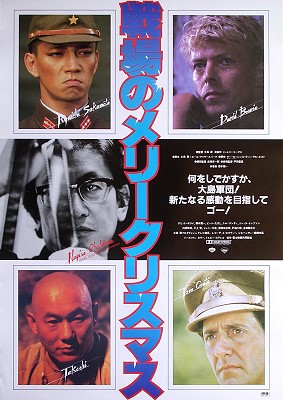 Original Japanese poster for Merry Christmas, Mr. Lawrence, a film based on The See and the Sower by Sir Lauren van der Post. Released 1983. Credit: Wikipedia.
Original Japanese poster for Merry Christmas, Mr. Lawrence, a film based on The See and the Sower by Sir Lauren van der Post. Released 1983. Credit: Wikipedia.However, a decade later in the summer of 1982, Pulvers grabbed the opportunity to go to Rarotonga, the most populated island of the Cook Islands, to be assistant to Nagisa Oshima, the film director and scriptwriter, on the production of Merry Christmas, Mr. Lawrence, a British-Japanese feature film starring two famous musicians: David Bowie and Ryuichi Sakamoto, both of whom he befriended. He also developed a close relationship with Oshima.
Once the production ended, Pulvers decided to return to Japan where he took up the position of literary editor at the Mainichi Daily News in Tokyo.
Ever since, he has been active writing about Japan (for eight years he wrote a weekly column for The Japan Times), writing novels and short stories, translating, broadcasting and working in the theatre and film in Japan and Australia.
His novels include: The Death of Urashima Taro, General Yamashita’s Treasure, The Honey and the Fires, and The Dream of Lafcadio Hearn. The latter is about Lafcadio Hearn (1850-1904) in Meiji Japan. Hearn, a writer and journalist, is known for his books about Japan such as Glimpses of Unfamiliar Japan (1894), as well as his collections of Japanese legends and ghost stories, Kwaidan: Stories and Studies of Strange Things.
- Pulvers is a highly creative polyglot, with an outsider’s passion for society’s periphery
During his 14-year stay in Japan, like Pulvers, Hearn wrote multiple books about the country, becoming known, in the decades succeeding his death, as the foremost interpreter of all things Japanese in the West.
He is still regularly cited today by academics studying Japanese folklore and its influence on contemporary Japan and its cultural outputs including film, television, and video games.
 Book cover of Star Sand. English Edition, published May 2016.
Book cover of Star Sand. English Edition, published May 2016.Pulvers’ recent novel Hoshizuna Monogatari (Star Sand), which he wrote in Japanese, was published by Kodansha, Japan’s largest publisher, in 2015 and subsequently in English in 2016 by AmazonCrossing.
Drawing on his screenplay writing experience he wrote a Japanese screenplay of the book, which was released nationally in Japan as a film, starring Lisa Oda and Brandon McClelland in 2017. Needless to say, the film is directed by Pulvers.
He is currently working on a film adaptation of another of his novels originally written in Japanese, which he hopes will be produced in Japan in the near future.
In addition to film making and novel and short story writing, Pulvers translates works from Japanese, Russian, and Polish. In 1976, he became an Australian national and since the early 1990s, has divided his time primarily between Tokyo and Sydney.
- Roger Pulvers
Roger Pulvers was born into a Jewish-American family in Brooklyn, New York in 1944. Soon after his birth, his family moved to Los Angeles, where he grew up, attending Burnside Avenue Elementary School, Louis Pasteur Junior High School and Alexander Hamilton High School.
Early exposure to show business came from annual trips in the 1950s to Las Vegas, where Pulvers saw dinner shows of The Ritz Brothers, Sammy Davis Jr. and other entertainers. Also, his father, Louis (1903–1993), had worked as a lighting technician at Warner Bros. during and after the war, bringing home piles of glossy enlargements of actors on set. His mother, Miriam (1912–2006), had been secretary to William S. Klein, lawyer for the Shubert brothers, owners of New York theatres. In her later years she became private secretary to Bette Davis.
- Japanese Editions
 Odoroku beki Nihongo (The Wonder that is Japanese), 2014
Odoroku beki Nihongo (The Wonder that is Japanese), 2014- Odoroku beki Nihongo (The Wonder that is Japanese), 2020[Bunko]
 Mosi Nihon toiu kuniga nakattara (If There Were No Japan), 2011
Mosi Nihon toiu kuniga nakattara (If There Were No Japan), 2011- Mosi Nihon toiu kuniga nakattara (If There Were No Japan), 2019[Bunko]
 Hosizuna monogatari (Star Sand), 2015
Hosizuna monogatari (Star Sand), 2015
 Kyō no hotori (On the Edge of Kyoto), 1969
Kyō no hotori (On the Edge of Kyoto), 1969 Urashima Tarō no shi (The Death of Urashima Taro), 1980
Urashima Tarō no shi (The Death of Urashima Taro), 1980 Nihongo insaido auto (Japanese Inside Out), 1982
Nihongo insaido auto (Japanese Inside Out), 1982 Rojā parubāsu no syōwa doramachikku (Roger Pulvers' Showa Dramatic!!), 1985
Rojā parubāsu no syōwa doramachikku (Roger Pulvers' Showa Dramatic!!), 1985 Yamasita syōgun no takara (General Yamashita's Treasure), 1986
Yamasita syōgun no takara (General Yamashita's Treasure), 1986 Torappu doa ga kaihei suru oto (The Trap Door Opening and Closing), 1987
Torappu doa ga kaihei suru oto (The Trap Door Opening and Closing), 1987 Amerikajin wo yameta watashi: Shisen wa chihei wo koete (The Unmaking of an American), 1988
Amerikajin wo yameta watashi: Shisen wa chihei wo koete (The Unmaking of an American), 1988 Sinbun wo kyūsyū sita syōjo (The Girl Who Absorbed A Newspaper), 1990
Sinbun wo kyūsyū sita syōjo (The Girl Who Absorbed A Newspaper), 1990 Hinomaru no sikakui taiyō (Japanese Flag with Square Sun), 1990
Hinomaru no sikakui taiyō (Japanese Flag with Square Sun), 1990 Gikyoku: dorīmu taimu (Dreamtime), 1992
Gikyoku: dorīmu taimu (Dreamtime), 1992 Buntsū eigo jutsu (A Love Story by Letters in Seven Parts), 1995
Buntsū eigo jutsu (A Love Story by Letters in Seven Parts), 1995 Nihon hitomebore: Yudayakei sakka no seikatsu to iken (Japan - love at first sight), 1997
Nihon hitomebore: Yudayakei sakka no seikatsu to iken (Japan - love at first sight), 1997 Tabisuru bousi (Lafcadio Hearn), 2000
Tabisuru bousi (Lafcadio Hearn), 2000 Hontō no eigo ga wakaru gojūichi no syohōsen (Understanding English for Real Vol. 1), 2001
Hontō no eigo ga wakaru gojūichi no syohōsen (Understanding English for Real Vol. 1), 2001 Raisu (Rice), 2001
Raisu (Rice), 2001 Sin hontō no eigo ga wakaru: Neitibu ni kokoro wo tsutaetai (Understanding English for Real Vol. 2), 2002
Sin hontō no eigo ga wakaru: Neitibu ni kokoro wo tsutaetai (Understanding English for Real Vol. 2), 2002 Hontō no eikaiwa ga wakaru: Stōrī de manabu kōgo Eigo (Understanding English for Real Vol. 3), 2003
Hontō no eikaiwa ga wakaru: Stōrī de manabu kōgo Eigo (Understanding English for Real Vol. 3), 2003 Kyūto debiru no mahou no eigo (The Cute Devil and the Twelve Lands), 2004
Kyūto debiru no mahou no eigo (The Cute Devil and the Twelve Lands), 2004 Gogyō de wakaru nihon bungaku: Einichi kyōgen kokkei gogyōsi (There Was an Old Pond with a Frog and other literary limericks), 2004
Gogyō de wakaru nihon bungaku: Einichi kyōgen kokkei gogyōsi (There Was an Old Pond with a Frog and other literary limericks), 2004 Setting the Stage: Articles and essays about the state of our world today, 2005
Setting the Stage: Articles and essays about the state of our world today, 2005 Shin baiburu sutōrīzu (The Honey and The Fires), 2007
Shin baiburu sutōrīzu (The Honey and The Fires), 2007 Himekuri gendai eigo cho (Contemporary English by the Day Vol. 1), 2007
Himekuri gendai eigo cho (Contemporary English by the Day Vol. 1), 2007 Himekuri gendai eigo cho (Contemporary English by the Day Vol. 2), 2008
Himekuri gendai eigo cho (Contemporary English by the Day Vol. 2), 2008 Eigo de yomitoku kenji no sekai (Unraveling the World of Miyazawa Kenji in English), 2008
Eigo de yomitoku kenji no sekai (Unraveling the World of Miyazawa Kenji in English), 2008 Delighting in Cultures, 2009
Delighting in Cultures, 2009 Eigo de ajiwau meigenshū, 2011
Eigo de ajiwau meigenshū, 2011 Miyazawa kenji ginga tetsudō no yoru (Reading "Night on the Milky Way Train"), 2011
Miyazawa kenji ginga tetsudō no yoru (Reading "Night on the Milky Way Train"), 2011 Kenji kara anata e (From Kenji to You), 2013
Kenji kara anata e (From Kenji to You), 2013 Hāfu (Half), 2014
Hāfu (Half), 2014 Konnichiwa yudaya jin desu (Hi, I'm Jewish!), 2014
Konnichiwa yudaya jin desu (Hi, I'm Jewish!), 2014 Jūnenkan benkyō sitemo eigo ga jyōtatsu sinai nihonjin no tameno sin eigo gakushūhō (English for Japanese Who've Really Tried but Still Can't Speak English), 2015
Jūnenkan benkyō sitemo eigo ga jyōtatsu sinai nihonjin no tameno sin eigo gakushūhō (English for Japanese Who've Really Tried but Still Can't Speak English), 2015 Eigo de yomu takuboku: jiko no gensō (The Illusions of Self - 199 Tanka by Ishikawa Takuboku), 2015
Eigo de yomu takuboku: jiko no gensō (The Illusions of Self - 199 Tanka by Ishikawa Takuboku), 2015

- English Editions
- The Honey and the Fires, 2019[Paperback]
- Peaceful Circumstances, 2019[Paperback]
- Half of Each Other, 2019[Paperback]
- The Unmaking of an American, 2019[Paperback]
- Tokyo Performance, 2018Red Circle Minis [Paperback]
- LIV, 2018[Paperback]
- Star Sand, 2016[Paperback]
- Yamashita (Theatre Australia New Writing), 1981[Paperback]
 The Death of Urashima Taro, 1981
The Death of Urashima Taro, 1981- General Yamashita's Treasure, 1994[Paperback]
 The Honey and the Fires, 2004[Paperback]
The Honey and the Fires, 2004[Paperback]- The Dream of Lafcadio Hearn, 2010[Paperback]
 If There Were No Japan: A Cultural Memoir, 2015
If There Were No Japan: A Cultural Memoir, 2015
- Other Editions
- Poems 2020: Translation from Russian, Polish and Japanese, Notes and Commentary, 2021Translation from Russian, Polish and Japanese to English [Paperback]
- Star Sand, 2017French edition [Paperback]
- Strong in the Rain, 2007Translation from Japanese [Paperback]
 The Noma Award for the Translation of Japanese Literature
The Noma Award for the Translation of Japanese Literature - Eigo de yomu sakura no mori no mankai no sita (Under the Cherry Blossoms in Full Bloom, by Ango Sakaguchi), 1998Translation from Japanese to English [Bunko]
 Kanimukasi to urikohimeko to amanjaku (An old crab's tale and princess Uriko and Amanjaku), 2005Translation from Japanese
Kanimukasi to urikohimeko to amanjaku (An old crab's tale and princess Uriko and Amanjaku), 2005Translation from Japanese- Eigo de yomu ginga testudō no yoru (Night on the Milky Way Train, by Miyazawa Kenji), 1996Translation from Japanese to English [Bunko]
- Eigo de yomu miyazawa kenji sishū (Poems by Miyazawa Kenji), 1997Translation from Japanese to English [Bunko]
 Yuki watari (Snow Crossing, by Miyazawa Kenji), 1998Translation from Japanese
Yuki watari (Snow Crossing, by Miyazawa Kenji), 1998Translation from Japanese Zasiki bokko no hanasi (The Story of the Zashiki Bokko, by Miyazawa Kenji), 1998Translation from Japanese
Zasiki bokko no hanasi (The Story of the Zashiki Bokko, by Miyazawa Kenji), 1998Translation from Japanese Chūmon no ōi Ryōriten (The Restaurant of Many Orders, by Miyazawa Kenji), 1998Translation from Japanese
Chūmon no ōi Ryōriten (The Restaurant of Many Orders, by Miyazawa Kenji), 1998Translation from Japanese Serohiki no Gōshu: Nikakokugo ehon (GAUCHE THE CELLIST, by Miyazawa Kenji), 1998Translation from Japanese
Serohiki no Gōshu: Nikakokugo ehon (GAUCHE THE CELLIST, by Miyazawa Kenji), 1998Translation from Japanese Chichi to kurase ba (The Face Of Jizo, by Hisashi Inoue), 2004Translation from Japanese
Chichi to kurase ba (The Face Of Jizo, by Hisashi Inoue), 2004Translation from Japanese Waga tomo Furoisu (My Friend Frois, by Hisashi Inoue), 2007Translation from Japanese
Waga tomo Furoisu (My Friend Frois, by Hisashi Inoue), 2007Translation from Japanese Once Upon a Time in Japan (folktales), 2015Translation from Japanese
Once Upon a Time in Japan (folktales), 2015Translation from Japanese

 Prize-winning
Prize-winning Prize nominee
Prize nominee Adapted for Film/TV
Adapted for Film/TV- In Japan there are two major book formats tanko-bon (Tanko) and bunko-bon (Bunko). See Factbook for explanation. The smaller images above are of the Bunko Editions, small-format paperbacks.
- Readers:
Russian poet Anna Akhmatova called the reader ‘the poet’s unknown friend’. I write in the only way I know how to write, and then hope that someday, somewhere such a friend will appear.
‘Were you a catfish in a previous life?’
Yes, I sometimes do look at such comments but tend to forget them. This applies to both positive and negative comments.
- Books:
The primary theme in most of my novels, perhaps the most notable being the latest, STAR SAND, is compassion and empathy for victims of violence. I would like to think that my stories give a bit of solace and hope to people who feel themselves disadvantaged by the circumstances of life.
Fiction: STAR SAND
Nonfiction: IF THERE WERE NO JAPAN
Yes. STAR SAND was made into a film released in 2017.
I naturally prefer the book covers that are decorated with the artwork of my daughters, all three of whom are artists. Among those I particularly like the cover of the Kawade Shobo Shinsha edition of my book of translations of tanka by Takuboku Ishikawa, THE ILLUSION OF SELF, which features a picture painted by my daughter Lucy.
Most often a title suggests itself early on in the process, sometimes before writing. I was told by someone in the earlier span of my career, ‘Your titles are fantastic, even better than the content of the book’. I fear that that person may have been right about some of my early novels, especially one that I would like to forget, except for the title: JAPANESE FLAG WITH SQUARE SUN.
I published my first collection of short stories, ON THE EDGE OF KYOTO, in 1969; and did not see publication of my first novel, THE DEATH OF URASHIMA TARO, until 1980 in Japanese and 1981 in English. I’m glad that it took some time because I was struggling in the beginning to find my own style.
- Writing:
Ah, I expected this question!
Everything is personal, because what occurs in the imagination is as real as that which ‘actually’ happens.
I look not only at the exquisite flowers in the garden but to the weeds by the side of the road.
I glean a great deal of inspiration from books, plays, films and works of art. This finds it way into my prose as the vehicle transporting words off the ground and into the air.
Many years ago, when I used to write by hand, I observed my hand moving the pen over the lines of the page as if it were being propelled by some outside force. As the hand wrote I examined it. My hand was beautiful! It was as if it belonged to someone else, someone whom I was bound to adore. It is to see those hands, now moving over a keyboard, that I write: to feel, for a series of long instants, that I too can appear to be beautiful.
I write a lot, and I write from the early morning. When I am not writing prose or plays I translate from Russian, Polish and Japanese. Before setting any words to a page I mull over character, situation and dialogue to the extent that I have the basic elements of a story in mind. Once I am into the writing process, the ‘beautiful hand’ that I mentioned in the entry above takes over and finishes the story for me.
I am a quick writer. One novel took twelve days; another, fourteen months. The former is much better than the latter. Of course, the actual process of writing is preceded by months of contemplation and planning and succeeded by a period of rewriting that continues into the proof stage.
I am helped with this type of multitasking because the genres that I work in are different from each other.
So, work on a novel or short story will not affect work on a translation or something journalistic. A stove has more than one burner; and the pots on the burners all contain different concoctions. The trick is to keep one’s long spoons separate.
Yes, I do. I was taught it in 1970 by the great Rokyoku master Musashi Tsukuba, who taught me the art of Rokyoku. It is …
In English …
‘Not a single eggplant flower in the field down from the house fails to fruit’.
It is apparently true that when a flower appears on an eggplant plant it will always turn into a fruit. I take this to mean that every person on Earth is beautiful and that every person on Earth can be fulfilled.
I write at my desk overlooking a gorgeous expanse of trees and distant mountains, though I live not far from the centre of Sydney. I generally write for about four hours in the morning. It is very rare for me to write after that.
I cook for my family every night, so shopping for dinner in the afternoon and making it in the evening is my daily luxurious pleasure.
Because of the places I have lived and the languages I have learned, my style is most affected by Russian poetry, Polish theatre and Japanese aesthetics. These ingredients may not seem to gel, but they are bound together by my Jewish sensibility until they form something resembling consistency. The metaphor of cooking here is appropriate, for it’s all about how it comes out in the end, not about what you put into it or how you combine everything to make something attractive and delicious for everyone to get sustenance from it.
No.
I love writing both, but the process is very different. Writing a short story is cutting and polishing a gemstone; writing a novel is creating a perfect setting and placing a number of gemstones in it to produce a beautiful whole.
Yes. I wrote the screenplay for the Australian film SEEING RED; for the Japanese film ASHITA E NO YUIGON (‘Best Wishes for Tomorrow’); and for STAR SAND, which I directed. I have also written the screenplay based on my novel HALF, which I am hoping to film in 2018.
So far, nothing. I actually like to write with noise and distractions around. I don’t mind being interrupted. When my children were little I used their cloth nappies as a hachimaki (a headband). The true motivation for writing comes from deep within. External factors never even get near.
- Reading:
I read a great deal, though I am not a fast reader. On the average I read two books a week, if not more.
OMG, the toughest question of the lot, perhaps. May I choose two?
Thomas Wolfe’s O LOST, which is the unexpurgated version of LOOK HOMEWARD, ANGEL. This book has had an immense impact on me. Kenji Miyazawa’s NIGHT ON THE MILKY WAY TRAIN, which I translated.
I am very fond of Giovanni in NIGHT ON THE MILKY WAY TRAIN. He is on a journey inside a vehicle that he didn’t know existed to a place he cannot fathom: the perfect metaphor for one’s life.
As a child I read three books in quick succession and was very moved by them.
Theodore Dreiser’s AN AMERICAN TRAGEDY.
Thomas Hardy’s TESS OF THE d’URBERVILLES.
E.B. White’s CHARLOTTE’S WEB.
It never occurred to me that there was such a thing as ‘children’s literature’.
I would choose books that have been translated into English from other languages.
Yes, my daughters’ website for their artwork …
www.pulvers.co
- Japan:
Japanese design has a genius for compartmentalization of objects, of space and of time itself. This seems to have carried over into expression in words.
Is it?
The great period of international interest in Japan was Meiji (1868-1912). Now, I do think that the world is still fascinated by Japan, sometimes for the wrong reasons. And I do believe that the aesthetics of Japan can lend new perspectives and profound subtlety – revelations of beauty and truth! – to the cultures of the world.
I would love to see a ‘new Meiji’ of inspiration flowing out of the Japan to all the corners of the world.
Japanese authors should just write what is most familiar to them, revealing their most intimate thoughts and passionate feelings in their work. I don’t see how the analogies with sport or technology are relevant here.
One of the greatest geniuses of the past is the artist Hokusai. Throughout his nearly ninety years he created the most varied and stunning body of work. It is a travesty that his name is not known on the same level of Vermeer’s and Picasso’s.
The most interesting and admirable artist working in today’s Japan is, to my mind, the filmmaker Hayao Miyazaki. His animated films are masterpieces; and he has dedicated his life to expressing humankind’s most charitable and empathetic qualities.
No, I don’t think that it is.
A Japanese author is free to publish with any number of publishers, large and small. The number of books of fiction and nonfiction printed in Japan is colossal. Literary magazines – though fewer in number today than a generation or two ago – abound. Japanese readers will read fiction, for instance, on internet sites that publish it.
- Interests:
My favourite films are:
OHAYO (Good Morning), Yasujiro Ozu
ASHES AND DIAMONDS, Andrzej Wajda
THE WIZARD OF OZ, Victor Fleming, and others.
The Ozu film because it is a lovely portrait of children growing up in a world of confused adults; the Wajda film because it demonstrates the futility of war; and The Wizard of Oz because I associate it with my childhood in the United States, where today there is not much to choose between one big Kansas and a phony wizard.
Yes, I have acted in a number of films, though I am what in Japanese is called a ‘radish’ (daikon). In English this is another type of edible item: a ham.
I am partial to American popular music from the 1920s to the 1960s.
I have sung karaoke a few times but am so bad at it that a friend listening said, ‘That was lovely, but what was the song you were singing?’
I am a big fan of serious Japanese anime but I have HATED Disney films since childhood. My bank in Japan issued me a bankcard with Disney characters on it and I sent it back to them asking for one without them. I think they had to make one up especially for me.
I wouldn’t mind being the nighthawk in Kenji Miyazawa’s THE NIGHTHAWK STAR. He is able to fly so high that he escapes the Earth’s atmosphere and becomes a star, so that he can shine a little bit of light throughout the sky.
I always love going to Iwate, in Tohoku, where I first went in 1969.
The vision of Kenji Miyazawa has permeated my own, and I cannot look at the mountains or the fields or the sky there without seeing them through his eyes.
I love to travel on the SL GINGA, the steam train that runs between Hanamaki and Kamaishi. The trip on it with one of my daughters was one of the best experiences of my life.
For the former I would have to say Maria Sklodowska, also known as Madame Curie. Despite the odds of her being a woman and from Poland against her, she made stunning discoveries and was twice awarded a Nobel Prize.
For the latter I would choose Sir David Attenborough, who at ninety is still opening our eyes to the wonders of our world and the need to cherish and preserve them.
Kenji Miyazawa
No.
Pingpong
- Life:
My high school Latin teacher, Mrs. Kelly. Her dedication to her subject and her insistence that every single student in her class be equally dedicated were inspirational.
Being with my wife and children.
The moment I made matzo ball soup for the first time.
I don’t do stress.
I won ‘The Smile of the Year’ contest in the County of Los Angeles in 1958 and have a perfect bite.
My mother was in ‘Ripley’s Believe it or Not’ when she was sixteen for being able to write upside down and backwards with both hands at the same time.
I can speak Japanese with a Yiddish accent.
My library card.
It depends on what country I’m in.
In Japan, 20,000 yen.
In Australia, 20 dollars.
In the United States, no cash at all. It’s safer.
- Awards
2015 – Inoue Yasushi Award
2013 – The Noma Award for the Translation of Japanese Literature for translation of Strong In the Rain by Kenji Miyazawa (雨ニモマケズ/Ame ni mo makezu)
2008 – Miyazawa Kenji Award
- Testimonials
“Roger Pulvers’ life reads like an adventure story. His recollections of life in Japan in the 1960s are bound to become a part of Japan’s national heritage,” Ryuichi Sakamoto, musician and composer.
“A beautifully written and compelling story! A sixteen-year-old girl, Hiromi, finds a secret place of peace in the midst of war in 1945 Japan,” Reader Comment on Goodreads.com about Star Sand.
- News & Media





